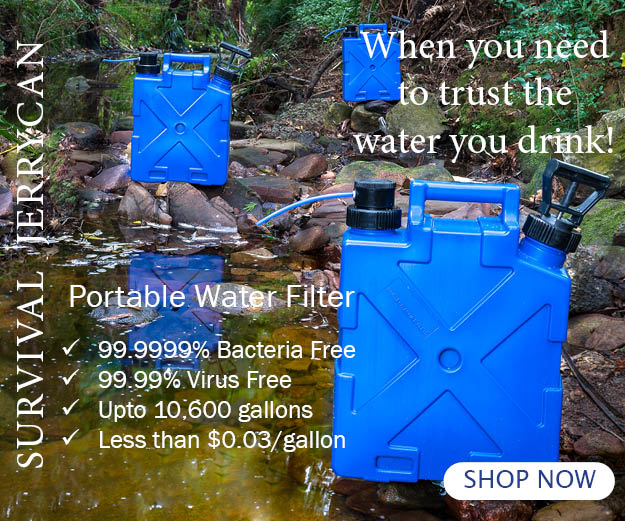When Water Filtration Systems Breakdown, It’s Our Health That Suffers
Water Filtration Systems – When Systems Breakdown, It’s Our Health That Suffers
We simply turn on the tap, putting complete trust in our water treatment systems, or we purchase bottled water with implicit faith that the product in the bottle is pure and better for our health.
In developing countries, mainly through a lack of resources, water systems are notorious for contamination by a wide range of bacteria, including Enteroaggregative e-coli, Escherichia coli, salmonella, and pathogens such as Cyclospora, Giardia, and Cryptosporidium.
Yet, even before you get off the plane, you could have consumed contaminated water, with the EPA reporting fecal coliform bacteria and e-coli in the drinking water system of several randomly tested passenger planes.
Rainwater systems may be contaminated through bacteria from bird droppings washed from the catchment area. Even though water passes through filters, they are not fine enough to filter out bacterial contamination. Wells and bores also need regular water analysis and a fine micron water purification system.
Not Only Faulty Water Filtration Systems Result In Contamination
Waterborne sickness can also result from faulty business and government systems.
Noted in figures supplied by the Natural Resources Defense Council, “More than 45 million Americans drank water supplied by systems where the unregulated and potentially deadly contaminant, Cryptosporidium, was found in their raw or treated water.”
In the United States, the FDA (Food and Drug Administration) oversee water quality; however, there’s a hitch. If the bottled water is packaged then sold within the same State, it is exempt from FDA regulations. An estimated 25% of bottled water is tap water, and an estimated 60% of water is bottled and sold in the same State.
While bottled water treated with a reverse osmosis water system is safer, in an incident reported by the Centers for Disease Control and Prevention, despite the water-bottling company assuring it used an advanced reverse osmosis water treatment system to purify the bottled water, numerous individuals contracted cholera. It was later discovered the bottles were improperly washed with un-filtered water – a critical breakdown in their water purification systems.
There Is a Solution! A Reliable Water Filter System That Travels with You
Using portable-sized Sure Aqua products means you don’t have to rely on the water authority, the airline, hotel, or the bottled water company to get it right. At home or when you’re traveling, you can take your own purifying drinking water system.


